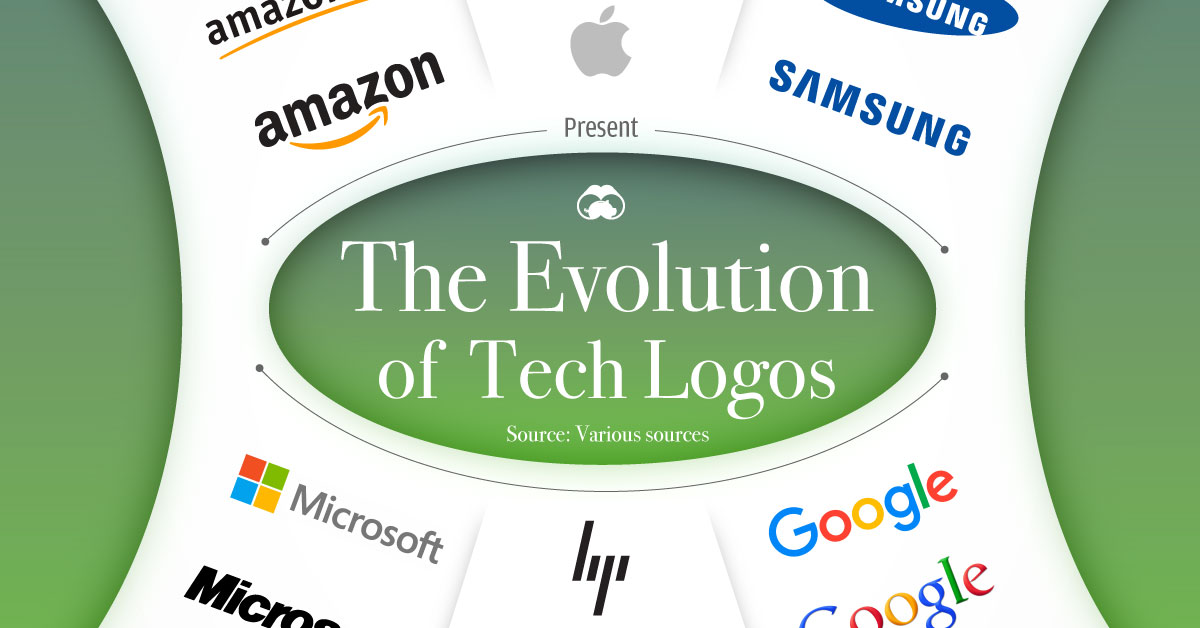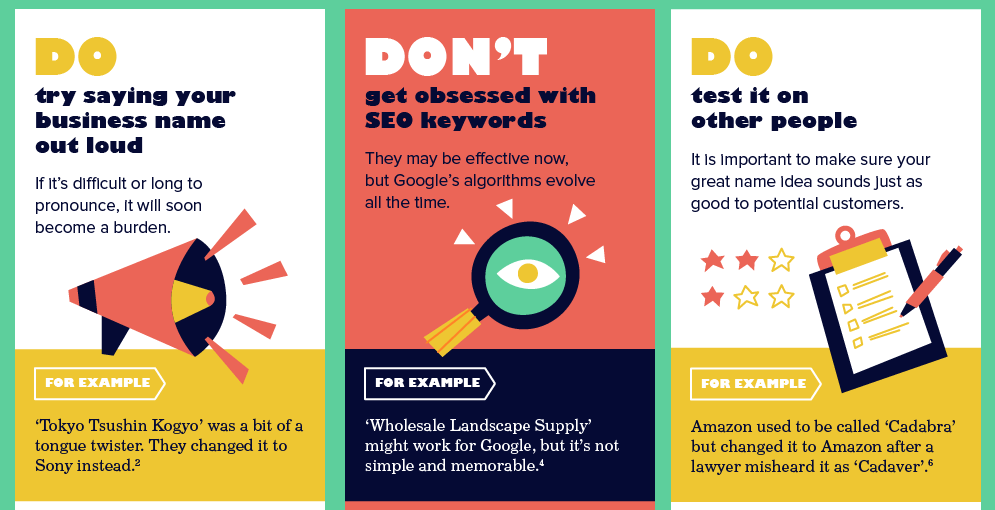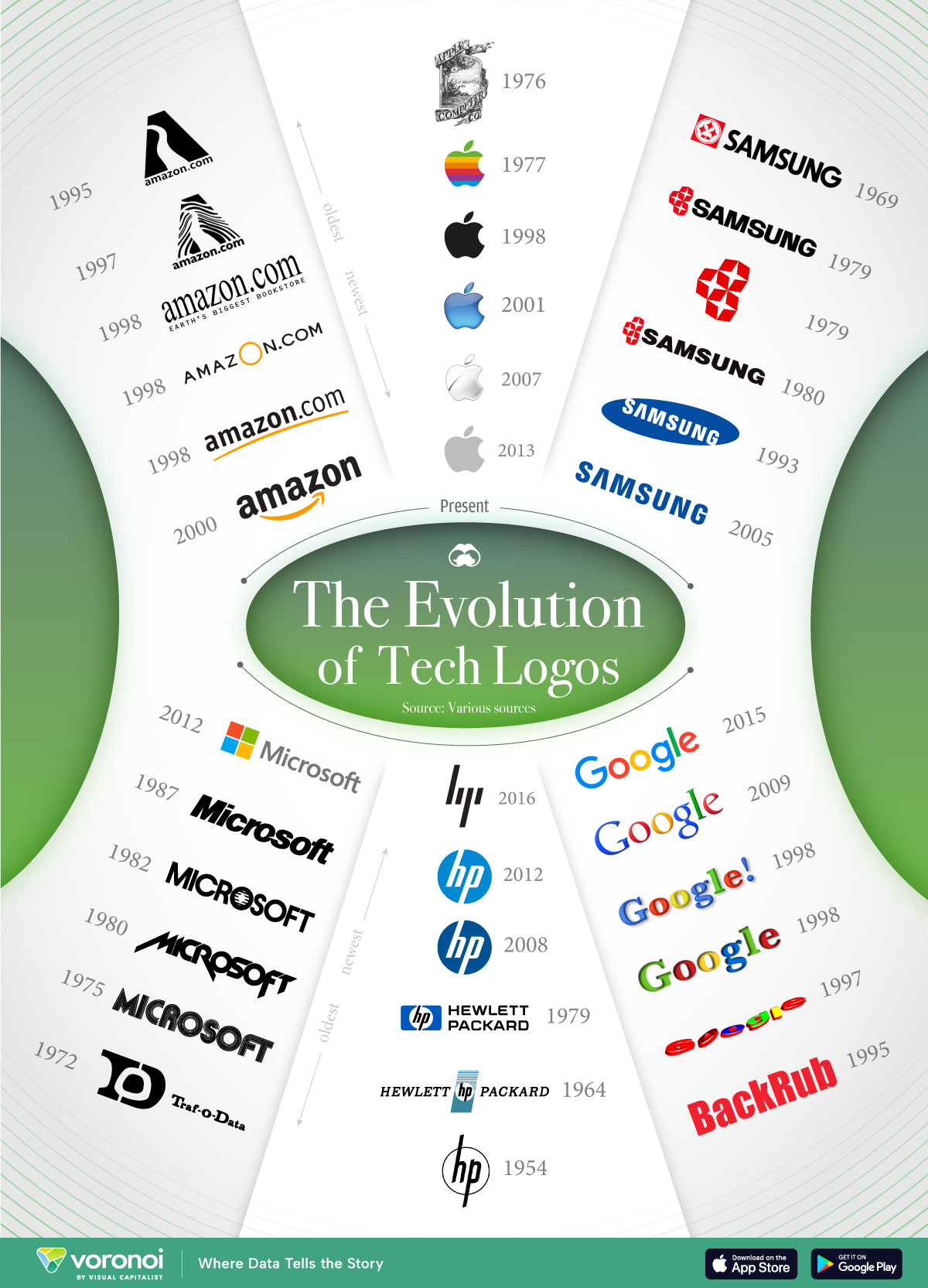Business
Naming Your Business: Lessons Learned the Hard Way
If you’re launching a new venture, there’s already enough pressure.
The reality is that most businesses end as failures, and early decisions are extremely critical. While it’s tempting to downplay the importance of coming up with a business name, the fact is that the first impression made on customers and suppliers has a massive bearing on the success of your enterprise.
Ideally, a business name needs to be short and memorable – but it also needs to stand the test of time, while not limiting future expansion opportunities.
Business Names 101
Today’s infographic comes from The Business Backer and it provides points to consider when naming a new business.
Importantly, famous examples of mistakes made by well-known companies are also provided for reference.

Of course, this is just a set of guidelines, and rules can certainly be broken under the right circumstances.
However, it’s important to at least keep these guidelines in consideration, otherwise you may end up with a brand that means something quite atrocious in a foreign language!
Lessons Learned the Hard Way
Here are some naming fails orchestrated by major companies, and how they got fixed:
AOL
Originally named Quantum Computer Services back in 1985, the name was far too long and confusing. It was eventually simplified to America Online in 1989, and finally AOL later on.
Amazon
The first name used for what is now the centerpiece of the Jeff Bezos Empire was actually Cadabra. However, it turned out that over the phone most people heard “Cadaver”, and so it was eventually tossed.
Sony
Sony was originally named Tokyo Tsushin Kogyo, which translates to Tokyo Telecommunications Engineering Corporation. It turned out to be quite a tongue-twister, so the company came up with a much simpler name.
Hertz
Hertz, the car rental company, was originally named “DrivUrSelf”, which wasn’t easy to spell for anyone.
Yahoo!
Yahoo! used to be known as “Jerry’s Guide to the World Wide Web”, which is long, hard to remember, and too different from other web portal or search engine names. Fortunately, Jerry Yang and David Filo changed the name of the company and also bought the yahoo.com domain name in 1995.
Technology
How Tech Logos Have Evolved Over Time
From complete overhauls to more subtle tweaks, these tech logos have had quite a journey. Featuring: Google, Apple, and more.

How Tech Logos Have Evolved Over Time
This was originally posted on our Voronoi app. Download the app for free on iOS or Android and discover incredible data-driven charts from a variety of trusted sources.
One would be hard-pressed to find a company that has never changed its logo. Granted, some brands—like Rolex, IBM, and Coca-Cola—tend to just have more minimalistic updates. But other companies undergo an entire identity change, thus necessitating a full overhaul.
In this graphic, we visualized the evolution of prominent tech companies’ logos over time. All of these brands ranked highly in a Q1 2024 YouGov study of America’s most famous tech brands. The logo changes are sourced from 1000logos.net.
How Many Times Has Google Changed Its Logo?
Google and Facebook share a 98% fame rating according to YouGov. But while Facebook’s rise was captured in The Social Network (2010), Google’s history tends to be a little less lionized in popular culture.
For example, Google was initially called “Backrub” because it analyzed “back links” to understand how important a website was. Since its founding, Google has undergone eight logo changes, finally settling on its current one in 2015.
| Company | Number of Logo Changes |
|---|---|
| 8 | |
| HP | 8 |
| Amazon | 6 |
| Microsoft | 6 |
| Samsung | 6 |
| Apple | 5* |
Note: *Includes color changes. Source: 1000Logos.net
Another fun origin story is Microsoft, which started off as Traf-O-Data, a traffic counter reading company that generated reports for traffic engineers. By 1975, the company was renamed. But it wasn’t until 2012 that Microsoft put the iconic Windows logo—still the most popular desktop operating system—alongside its name.
And then there’s Samsung, which started as a grocery trading store in 1938. Its pivot to electronics started in the 1970s with black and white television sets. For 55 years, the company kept some form of stars from its first logo, until 1993, when the iconic encircled blue Samsung logo debuted.
Finally, Apple’s first logo in 1976 featured Isaac Newton reading under a tree—moments before an apple fell on his head. Two years later, the iconic bitten apple logo would be designed at Steve Jobs’ behest, and it would take another two decades for it to go monochrome.
-

 Mining1 week ago
Mining1 week agoGold vs. S&P 500: Which Has Grown More Over Five Years?
-

 Markets2 weeks ago
Markets2 weeks agoRanked: The Most Valuable Housing Markets in America
-

 Money2 weeks ago
Money2 weeks agoWhich States Have the Highest Minimum Wage in America?
-

 AI2 weeks ago
AI2 weeks agoRanked: Semiconductor Companies by Industry Revenue Share
-

 Markets2 weeks ago
Markets2 weeks agoRanked: The World’s Top Flight Routes, by Revenue
-

 Countries2 weeks ago
Countries2 weeks agoPopulation Projections: The World’s 6 Largest Countries in 2075
-

 Markets2 weeks ago
Markets2 weeks agoThe Top 10 States by Real GDP Growth in 2023
-

 Demographics2 weeks ago
Demographics2 weeks agoThe Smallest Gender Wage Gaps in OECD Countries














